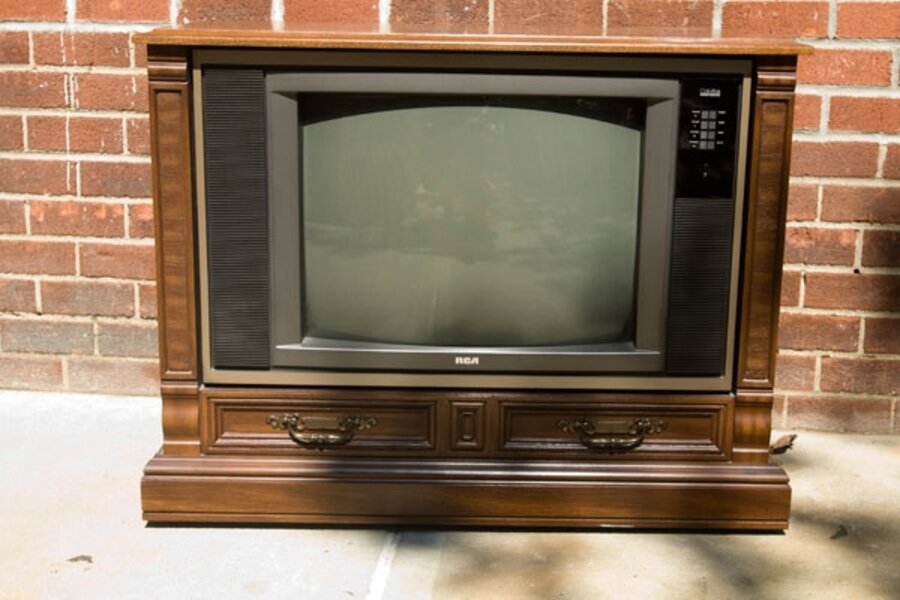Where does your trash go?
Loading...
Thursday night, an exhibit on trash opened at the Architectural League of New York. The so-called "Trash Track" project asks a deceptively simple question: Where do all those cans, disposable coffee cups, and old computers go when you throw them out?
With the aid of modern technology, it seeks to supply an answer — in real time.
Researchers from MIT's SENSEable City Lab will attach some 3,000 custom-designed tags to bits of trash in Seattle, New York, and London. The smart tags transmit information on location and movement over cellphone networks to a central server at MIT, where, eventually, it will be analyzed.
About the size of a small cellphone minus keyboard and screen, the tags are battery-powered. One charge lasts about two months.
This Saturday, another Trash Track exhibit will open at the Seattle Public Library.
The New York exhibit shows the voyages of some of the 500 pieces of trash tagged in Seattle and 50 in New York. Grayscale maps of the two cities were projected onto a rectangular screen. A header defined the piece of trash in question — an inkjet cartridge, say, or a PC tower. A timeline showed a "present" point moving steadily. Distance traveled per time — 26 miles by Day 7 for a PC tower, for example — was also displayed.
Yellow dots superimposed on the map indicated how long a given piece of trash spent at any given location. Lines interconnecting the dots showed where the trash traveled. (For a visualization, see here.)
Immediately apparent: 1. Trash does not travel in straight lines — it inexplicably and quite frequently doubles back. 2. After leaving your house, trash moves much more than you would think.
The project has several aims, explains Assaf Biderman, associate director of MIT's SENSEable City Lab, and Carlo Ratti, the lab's director.
Mr. Ratti compares the Trash Track project to injecting a tracer into one's blood stream. After you conduct the procedure, you get a clear picture of what was previously invisible — the contours of once hidden blood vessels and organs. The new knowledge allows you to improve flow and efficiency, he says.
And there's another aim. Perhaps simply being aware that our trash has a life after it leaves our houses will induce us to create less of it.
"We tend to forget about it when we throw it away," says Mr. Biderman. "All the things we throw away, they end up somewhere on the planet. They do not magically disappear."
So far, it's hard to say what the project has uncovered. (One highlight: A piece of Seattle trash ended up in Mexico.) But it has generated much interest. The EPA has approached the group about collaborating on tracking e-waste — electronics full of potentially toxic substances that, many say, constitute a growing threat to public health. (Much e-waste ends up in the developing world where people with inadequate protection "mine" it for metal and plastic they then resell.
The Trash Track exhibit belongs to a larger show that runs through Nov. 7 called "Toward the Sentient City." All the exhibits in the show explore the same question: "the evolving relationship between ubiquitous computing, architecture, and urban space," as the show's pamphlet says.
That underscores an important point on technology. Trash Track couldn't have happened 20 years ago. The technology didn't exist. Even 15 years ago ago, cellphones would have been too big, and perhaps too expensive, to attach to — and then throw out with — the trash. What's more, the GPS function would have been inadequate. And perhaps most importantly, there was no wireless network to connect to. Cell towers were not ubiquitous.
The flip side of this observation is that new technologies now permit cities to become self-aware to a degree that would have been difficult, if not impossible, to achieve in the past.
In some sense, 21st century wiring — and that means wireless wiring — now allows cities to become smarter, greener, and more sustainable than probably ever before in the modern era.
Editor's note: For more articles about the environment, see the Monitor's main environment page, which offers information on many environment topics. Also, check out our Bright Green blog archive and our RSS feed.





